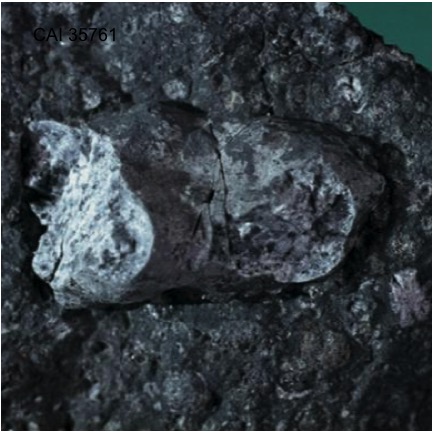Cosmochemistry
Overview
We are interested in the processes that led to the formation of the solar system. We study primitive materials in meteorites in order to eluciate these processes.
Calcium aluminum-rich inclusions, like that pictured below in a false color image of a section through the object, bore witness to the earliest epochs of solar system formation. The pits shown in the image are made with an ultraviolet laser:

An image of an especially large CAI from the Allende meteorite is shown here:

We also study more evolved rocks in the solar system. We have studied the details of the isotopic composition of the Moon, for example, including the sources of its oxygen and a redefinition of its age. Moon coworkers Paul Warren, Ed Young, and Issaku Kohl are shown below holding a Moon rock (credit: C. Snow):

What we learn
The distribution of short-lived radionuclides is a key observable that can be used to characterize the environment in which the solar system formed. We have proposed that the abundances of radionuclides, the observed abundance and distribution of 26Al in the Galaxy, and the detection of igneous processing of extrasolar asteroids as preserved in polluted white dwarf stars all suggest that the solar system formed in a massive star forming region similar to those seen in the Galaxy today. While not terribly surprising, the evidence for this conclusion had been lacking. Recent determination of the abundance of 247Cm in the solar system is consistent with our hypothesis (see figure below)

A reasonable analog for our formation might be the Carina star-forming region shown below in a composite Hubble Space Telescope image:

Recently we completed a study of the oxygen isotopic difference between Earth and the Moon. Our result published in Young et al (2016, Science) shows that the material that made up the Moon and Earth was thoroughly well mixed. The figure belows shows contours for the differences in mass-independent oxygen isotope signals between Earth and Moon as a function of differences in oxygen isotopes between impactor and target and differences in relative fractions of impactor Theia in the Moon and Earth:



